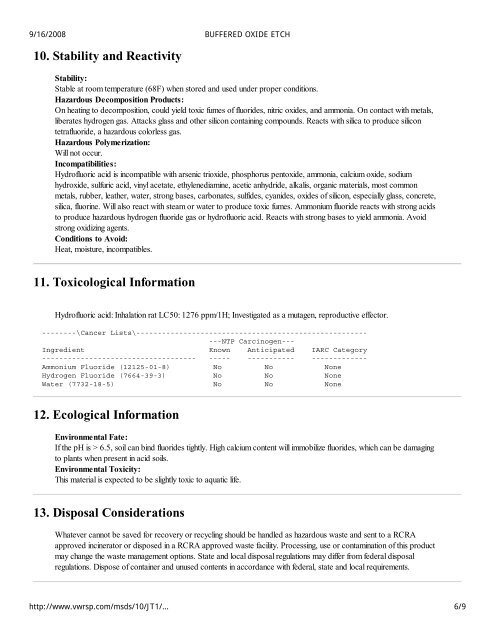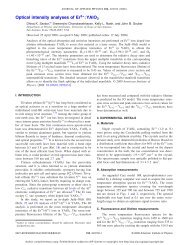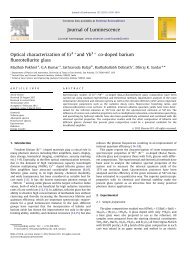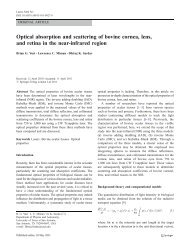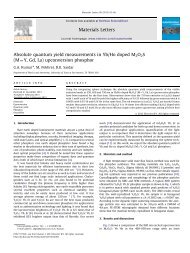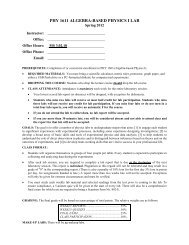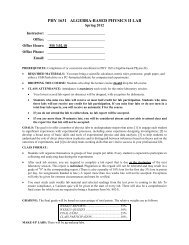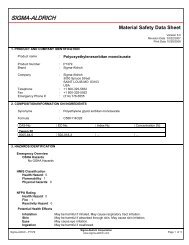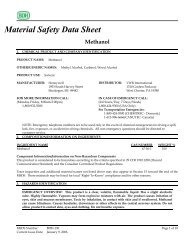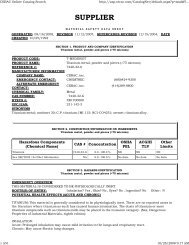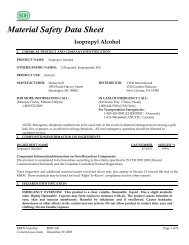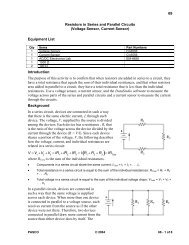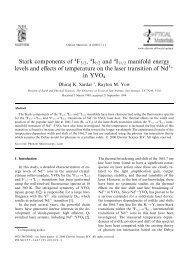You also want an ePaper? Increase the reach of your titles
YUMPU automatically turns print PDFs into web optimized ePapers that Google loves.
9/16/2008 <strong>BUFFERED</strong> <strong>OXIDE</strong> <strong>ETCH</strong><br />
10. Stability and Reactivity<br />
Stability:<br />
Stable at room temperature (68F) when stored and used under proper conditions.<br />
Hazardous Decomposition Products:<br />
On heating to decomposition, could yield toxic fumes of fluorides, nitric oxides, and ammonia. On contact with metals,<br />
liberates hydrogen gas. Attacks glass and other silicon containing compounds. Reacts with silica to produce silicon<br />
tetrafluoride, a hazardous colorless gas.<br />
Hazardous Polymerization:<br />
Will not occur.<br />
Incompatibilities:<br />
Hydrofluoric acid is incompatible with arsenic trioxide, phosphorus pentoxide, ammonia, calcium oxide, sodium<br />
hydroxide, sulfuric acid, vinyl acetate, ethylenediamine, acetic anhydride, alkalis, organic materials, most common<br />
metals, rubber, leather, water, strong bases, carbonates, sulfides, cyanides, oxides of silicon, especially glass, concrete,<br />
silica, fluorine. Will also react with steam or water to produce toxic fumes. Ammonium fluoride reacts with strong acids<br />
to produce hazardous hydrogen fluoride gas or hydrofluoric acid. Reacts with strong bases to yield ammonia. Avoid<br />
strong oxidizing agents.<br />
Conditions to Avoid:<br />
Heat, moisture, incompatibles.<br />
11. Toxicological Information<br />
Hydrofluoric acid: Inhalation rat LC50: 1276 ppm/1H; Investigated as a mutagen, reproductive effector.<br />
--------\Cancer Lists\------------------------------------------------------<br />
---NTP Carcinogen---<br />
Ingredient Known Anticipated IARC Category<br />
------------------------------------ ----- ----------- -------------<br />
Ammonium Fluoride (12125-01-8) No No None<br />
Hydrogen Fluoride (7664-39-3) No No None<br />
Water (7732-18-5) No No None<br />
12. Ecological Information<br />
Environmental Fate:<br />
If the pH is > 6.5, soil can bind fluorides tightly. High calcium content will immobilize fluorides, which can be damaging<br />
to plants when present in acid soils.<br />
Environmental Toxicity:<br />
This material is expected to be slightly toxic to aquatic life.<br />
13. Disposal Considerations<br />
Whatever cannot be saved for recovery or recycling should be handled as hazardous waste and sent to a RCRA<br />
approved incinerator or disposed in a RCRA approved waste facility. Processing, use or contamination of this product<br />
may change the waste management options. State and local disposal regulations may differ from federal disposal<br />
regulations. Dispose of container and unused contents in accordance with federal, state and local requirements.<br />
http://www.vwrsp.com/msds/10/JT1/… 6/9


